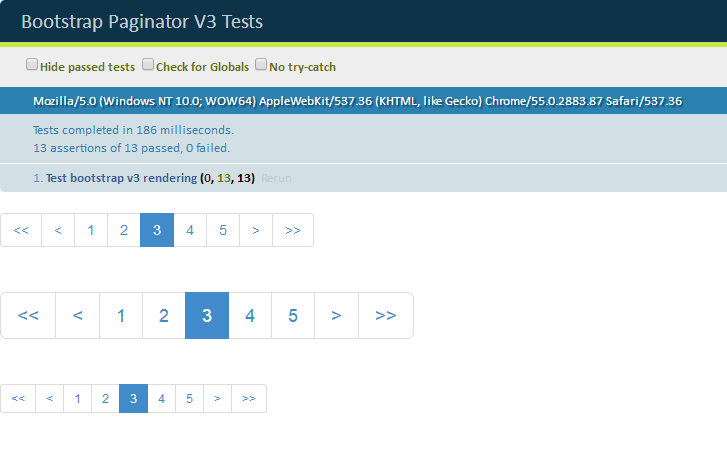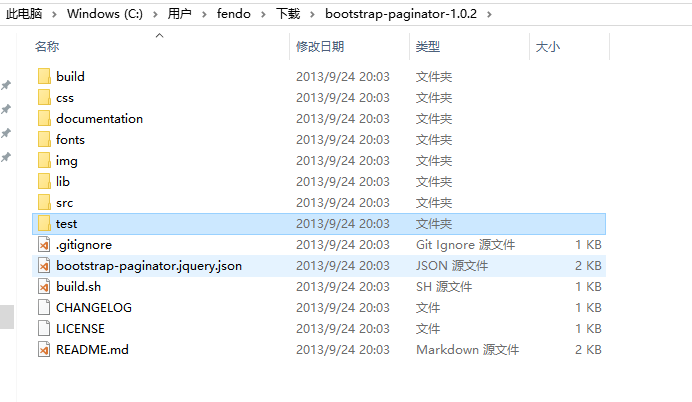Bootstrap Paginator 分页插件
本文共 685 字,大约阅读时间需要 2 分钟。
一、插件简介
Bootstrap Paginator是一款基于Bootstrap和jQuery的分页组件。
github地址为:
中文介绍比较详细的:
效果图如下:

二、插件使用
1、下载源码
下载最新的源码解压之后,如下:

2、引入必要的css和js文件。
3、用一个div来展示
4、JS代码
$('#pageLimit').bootstrapPaginator({ currentPage: 1, totalPages: 10, size:"normal", bootstrapMajorVersion: 3, alignment:"right", numberOfPages:5, itemTexts: function (type, page, current) { switch (type) { case "first": return "首页"; case "prev": return "上一页"; case "next": return "下一页"; case "last": return "末页"; case "page": return page; } }}); 5、效果如下

你可能感兴趣的文章
mysql
查看>>
MTK Android 如何获取系统权限
查看>>
MySQL - 4种基本索引、聚簇索引和非聚索引、索引失效情况、SQL 优化
查看>>
MySQL - ERROR 1406
查看>>
mysql - 视图
查看>>
MySQL - 解读MySQL事务与锁机制
查看>>
MTTR、MTBF、MTTF的大白话理解
查看>>
mt_rand
查看>>
mysql -存储过程
查看>>
mysql /*! 50100 ... */ 条件编译
查看>>
mudbox卸载/完美解决安装失败/如何彻底卸载清除干净mudbox各种残留注册表和文件的方法...
查看>>
mysql 1264_关于mysql 出现 1264 Out of range value for column 错误的解决办法
查看>>
mysql 1593_Linux高可用(HA)之MySQL主从复制中出现1593错误码的低级错误
查看>>
mysql 5.6 修改端口_mysql5.6.24怎么修改端口号
查看>>
MySQL 8.0 恢复孤立文件每表ibd文件
查看>>
MySQL 8.0开始Group by不再排序
查看>>
mysql ansi nulls_SET ANSI_NULLS ON SET QUOTED_IDENTIFIER ON 什么意思
查看>>
multi swiper bug solution
查看>>
MySQL Binlog 日志监听与 Spring 集成实战
查看>>
MySQL binlog三种模式
查看>>